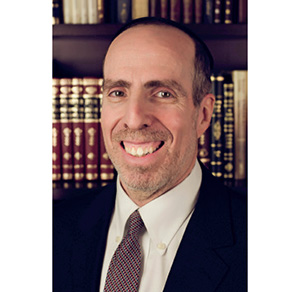
The premier Sephardic poskim Rav Ovadia Yosef and Rav Yitzhak Yosef, permit using one’s dishwasher for both meat and milk (Yalkut Yosef Otzar Dinim L’isha p. 618; Yalkut Yosef Isur V’heter 3:485 and Teshuvot Yabia Omer 10 Yoreh Dei’ah 4). They even (essentially) permit simultaneous washing of both meat and milk in the same dishwasher.
However, Rav Shlomo Amar told a group of Shaarei Orah congregants (during his visit to our congregation on Shabbat Nachamu 5777) that he believes that a dishwasher should not be used for both milk and meat unless one “kosherizes” the dishwashers between uses of the opposite food types. Rav Amar typically follows in the halachic paths of Rav Ovadia Yosef. However, regarding this issue he is not comfortable doing so.
We learn from Rav Amar’s response that this issue is not necessarily a debate that runs along classic differences between Sephardic and Ashkenazic Jews. In order to explain Rav Amar’s approach, let us first present Rav Ovadia’s reasoning as set forth in Teshuvot Yabia Omer 10 Yoreh Dei’ah 4.
Rav Ovadia’s Reasoning
Chacham Ovadia first describes how a dishwasher works. First off, a person normally removes large residue or food particles from the dish before inserting into the dishwasher. After putting the dishes in the unit, one adds a cleansing agent into a designated compartment inside the machine. The process then begins, and first to occur is a rinsing of the dishes with cold water. After the cold cycle completes, the water is warmed and the cleaning agent is released. The hot water mixes with the cleaning agent and together washes the dishes. After this process, the water shuts off, and a heating element is turned on to dry the dishes. Once dry, the process is complete.
Rav Yosef argues that the dishwasher is perfectly analogous to an issue addressed by Maran Rav Yosef Karo (Shulchan Aruch Yoreh Dei’ah 95:4). He describes a situation where people wanted to use giant pots normally used for dairy cooking for the purpose of cleaning various tableware and cookware including meat dishes. Maran rules that it would be permissible to use this giant dairy pot to clean meat dishes so long as a distasting agent such as eifer (ashes) or soap is added. Such an agent would render the milk in the walls of the pot pagum (unsavory, unfit, spoiled), thus allowing the insertion of a meat vessel for cleansing. This leniency applies even if the meat pot is dipped in the giant milk pot together with boiling hot water.
Rav Yosef applies Maran’s reasoning regarding the giant milk pot to permit simultaneous washing of meat dishes and dairy dishes in a dishwasher. When released together with the hot water, the soap deposited into the designated compartment renders any food particles in the dishwasher as pagum. Chacham Ovadia therefore concludes that not only is it permissible to use the same dishwasher for both meat and dairy dishes, but it is also permissible for one dishwasher to be used to wash dairy and meat dishes simultaneously.
Concerns With Rav Ovadia’s Ruling
Rav Ovadia’s ruling seems to be convincing and even airtight. The analogy between a dishwasher and the giant pot discussed in the Shulchan Aruch seems perfect. Why then is Rav Amar not comfortable with Rav Ovadia’s ruling?
There is one major chink in the armor of Rav Ovadia’s ruling. There is very serious concern that in the very beginning of the washing cycle, hot water may start spraying before it has been rendered pagum by the detergents.
Rav Yosef’s description of the operation of a dishwasher shows that he assumed that the water released before the detergent is introduced is cold. However, this is not always the case. If so, if one simultaneously washes milk and meat utensils in the same dishwasher where hot water is released before the detergent, not only are all the utensils rendered non-kosher but one also runs afoul of the Torah-level prohibition to cook milk and meat together!
Conclusion
Rav Ovadia Yosef wrote a very persuasive responsum permitting washing meat and milk dishes in one dishwasher. However, this ruling presumes that hot water is introduced only after the detergent has been released into the dishwasher. This assumption does not apply to all dishwashers.
While one could try to determine that the dishwasher one purchases releases the water only after the detergent is introduced, this could lead to confusion. If some dishwashers carry with them serious halachic concerns, it is sensible to adopt a policy of not permitting the use of any dishwasher for both meat and milk.
Rav Amar’s atypical veering from Rav Ovadia’s ruling might stem from the concern that permitting the use of some dishwashers could lead to serious halachic violations.
In practice, I advise Sephardic Jews to follow the ruling of Rav Amar and wash milk and meat in the same dishwasher only if one “kosherizes” the dishwasher between uses of the opposite food type by running it through an empty cycle with detergent. Indeed Rav Shmuel Khoshkerman told me that Rav Ovadia’s teshuvah does not apply to today’s dishwashers due to concern that hot water is released into the dishwasher before the detergent is released.
By Rabbi Chaim Jachter
Rabbi Haim Jachter is the spiritual leader of Congregation Shaarei Orah, the Sephardic Congregation of Teaneck. He also serves as a rebbe at Torah Academy of Bergen County and a dayan on the Beth Din of Elizabeth.









